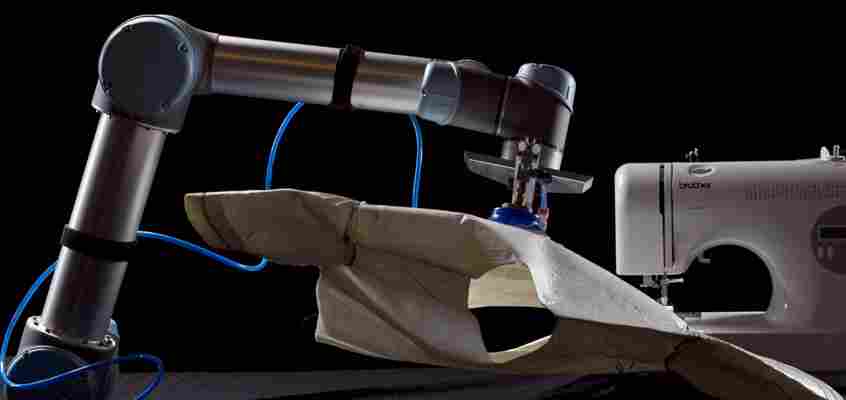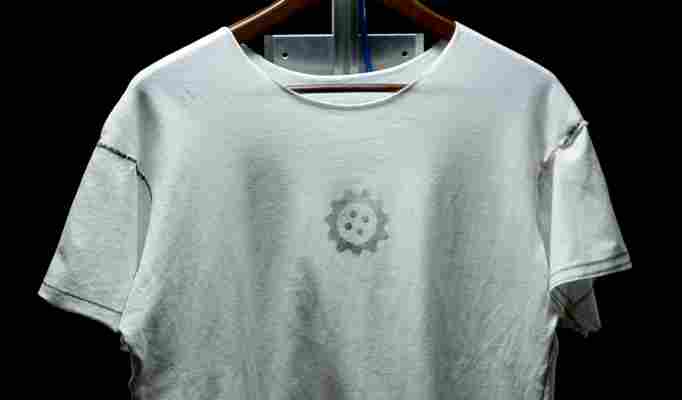Are Robots About to Radically Transform the Fashion Industry?
According to a 2013 model by Oxford researchers Carl Benedikt Frey and Michael A. Osborne , electronic equipment assemblers (which make, for example, computers and batteries) face a 95 percent chance of seeing themselves replaced by robots within 20 years. Retail salespeople? Ninety-two percent. Sewing machine operators? The research suggests their production lines have a nearly 89 percent chance of computerizing in the next two decades. So how is the fashion world responding to this impending transformation, especially as much of the industry relies on apparel from sewing assembly lines?
Designers have actually meditated on the idea of automatization for decades. In Alexander McQueen’s spring/summer 1999 show, model Shalom Harlow spun in place as two robotic arms sprayed her white dress with black and yellow ink. She mimed resistance and then resignation as the automata drenched her. But despite signs of fashion embracing the future of robotics, the garment industry has struggled to optimize the new technology.
Jonathan Zornow hopes that his new start-up, SewBo, will make fabrics more cooperative as they’re formed into the first generation of robotically sewn clothing. “Robots are quick and precise, but they can’t handle much in the way of variation," says Zornow. "That’s why they haven't been able to handle the complexities of working with limp, flexible fabrics that contort in an infinite number of ways.” According to the entrepreneur, all previous attempts to automate sewing have overcomplicated the process.

The sewing machine going to work after the polymer has been applied to stiffen the clothing.
His response has been a process that begins by smothering textiles in liquid polymers, eventually turning them into rigid composites. Temporarily stiffened, fabric can be molded, riveted, and otherwise easily manipulated by standard robotic arms—the same ones used to paint cars or install computer chips. Once the sewing is finished, the liquid polymer is rinsed off with water and the garment relaxes to its original loose fitting.
Assuming the inevitability of automation, Zornow is cautiously optimistic: “It’s my hope that the transition will be gradual enough to avoid a major impact for most communities. That said, it’s important that countries dependent on apparel manufacturing take the threat of automation seriously and start to diversify their economies.”
Horrific conditions in garment factories throughout the world have plagued laborers since the invention of the sewing machine. In recent years, developed countries have outsourced garment work to poorer regions. If automation succeeds, moral questions will linger, especially as a major global workforce faces unemployment. Laws in countries such as Myanmar are requiring severance pays for employees of shuttered factories.

The same shirt, sewn together by robot, after water has rinsed away the polymer.
For now, it's unclear how and when robotics will shake up the world of retail and fashion. All we know is that companies like SewBo, which is working behind the scenes with “several prominent brands,” has plans to radically innovate the way your clothing is made.